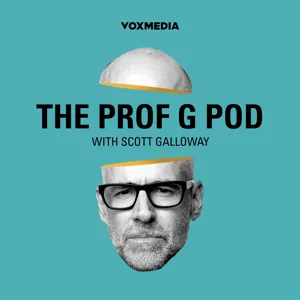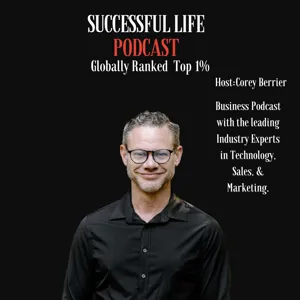Podcast Summary
Focus on retention before heavy acquisition tactics: Startups should prioritize retention and understand their business metrics before implementing heavy acquisition tactics. A traditional spreadsheet model can help founders assess channels of acquisition, conversion, retention, and monetization.
When it comes to growth strategies for startups, Dan Hawkenmeyer, founder of Basis One, advises against jumping into heavyweight acquisition tactics too soon. Instead, he emphasizes the importance of focusing on retention and ensuring that the company is ready for such efforts based on its product-market fit. Gustaf Alstramer, a partner at Y Combinator, adds that a traditional spreadsheet model, analyzing channels of acquisition, conversion, retention, and monetization, is a good starting point for founders who can't afford growth consultants. Hawkenmeyer also suggests hiring a smart analytical generalist to help with this process. These insights highlight the significance of a well-rounded growth strategy that prioritizes retention and a solid understanding of the business's metrics.
Understanding the interconnectedness of product development and growth: Optimize product experience for dominant acquisition channel for long-term success. Early focus on product, later focus on growth factors.
While both product development and growth are crucial for a business, they are interconnected rather than being mutually exclusive. The product experience can sell itself, but optimizing it to cater to the dominant customer acquisition channel is essential for long-term success. In the early days of Airbnb, the great product experience was the primary driver of growth, but as the company grew, they optimized various aspects such as onboarding flow, acquisition channels, and retention to make the product more accessible to a wider audience. The best products are those that are built to optimize for the dominant acquisition channel, be it paid marketing, SEO, or referrals. For instance, if it's paid marketing, monetization needs to be quick and deep, while for SEO, generating and curating content is necessary to compete. Building for growth factors like SEO should be done well in advance. While some products may be unique enough to compete on different factors, the key is to understand the role of both product development and growth in the long-term success of a business.
Optimizing user experience for growth: Improving sign-up and login processes can significantly boost revenue. Dedicated growth teams focus on optimizing channels, onboarding, and conversions to ensure continued product growth.
While a great product may have natural adoption, it doesn't reach its full potential without dedicated efforts from a growth team. The growth team identifies and optimizes various channels, onboarding processes, and conversions to ensure the product's growth doesn't slow down. An example from Airbnb illustrates this, as their authentication team focused on improving the sign-up and login experience, leading to a significant increase in revenue. Companies like Facebook, Twitter, and LinkedIn have recognized this and established growth teams to accelerate their growth. Even though the product may be excellent, it's essential to optimize the user experience and make it as accessible as possible to reach its full potential.
Focus on testing and optimizing for higher effect sizes: Early-stage startups should prioritize data integrity and proper instrumentation before implementing experimentation tools.
While growth hacking techniques can be effective in extreme product-market fit scenarios, they can be problematic when applied without considering long-term sustainability. Instead, companies should focus on testing disparate things and optimizing for higher effect sizes to learn more and get results back faster. A thoughtful, slightly slower approach can lead to better insights. Regarding experimentation and A/B testing, these are crucial tools for measuring the impact of new changes. However, for early-stage startups, the first priority should be ensuring data integrity by properly instrumenting their sites and updating instrumentation as features change. Only then should they consider using full-stack or third-party tools for experimentation. An entire engineer dedicated to this task is often necessary for effective implementation.
Starting simple with feature flags and user tracking: Begin with a basic tool for testing new features and measuring retention. Focus on user funnel optimization and data collection to enhance the user experience and improve retention.
When it comes to implementing experimentation and tracking metrics for product growth, starting simple is key. Begin with a basic feature flagging tool to test new features and gauge their performance using user accounts. Retention is a crucial metric to focus on, and understanding its connection to product value is essential. To measure retention effectively, start by tracking where users are coming from using tools like Google Analytics and surveys. Then, examine the end-to-end user funnel to identify opportunities for improvement. Early optimization of the user experience can significantly impact retention. Remember, the goal is to gather useful data with a manageable sample size. As your tooling and understanding grow, you can build more complex systems. But always keep in mind that simplicity and a user-centric approach are the foundation for successful product growth.
Understanding user behavior and experimentation for retention and growth: Build a culture of experimentation to validate decisions, measure marketplace health with key metrics, and optimize specific pages for significant results.
Having a strong understanding of user behavior and experimentation is crucial for retention and growth in a product. Metrics such as healthy activation and upstream proxies for desired outcomes are essential additions to the model. For marketplaces, identifying a north star metric that combines both sides of the marketplace is important. At ThumTech, transactions or requests placed were the key metrics for measuring marketplace health. However, not all companies have fully embraced experimentation as a way to validate decisions. To change this, it's important to build a culture of experimentation organically, starting with a small growth team and showing the impact through numbers. A great example of this is the early team at SurveyMonkey, who focused on optimizing a specific page in the product and saw significant results, leading to the expansion of their influence within the company.
Creating a culture of experimentation: Encourage experimentation, make results a company-wide discussion, find quick tests, publicly share goals and progress
Building a culture of experimentation within a company, especially for founders who may be resistant to the idea, can lead to valuable insights about users and the business. This can be achieved by making experiment results a company-wide discussion point, encouraging ideas from all teams, and having a clear decision-making process. For employees looking to initiate growth-driven approaches, finding quick and cost-effective tests, such as paid marketing or new channel acquisitions, can be an effective way to gain buy-in and prove the value of experimentation. Publicly sharing goals and progress towards those goals can also help anchor the entire team towards the shared objective.
Identifying teams responsible for improving booking metric and optimizing high-intent flows: Focus on teams driving incrementality to booking metric, experiment with ideas to optimize high-intent flows, and build a sales funnel in B2B companies to sell more effectively.
Improving the booking metric in a company involves identifying the teams responsible for driving incrementality to that metric and allowing them to experiment with ideas to optimize high-intent flows. At Airbnb, for instance, teams like growth and marketplace were tasked with improving the booking metric. An engineer working on sign-up, for example, would focus on optimizing the sign-up flow since it deals with high-intent users. The homepage, on the other hand, may not be the best place to start as it attracts a mix of people with varying intentions. Consumer companies have led the way in growth strategies for the past decade, and many of these tactics are now being adopted by B2B companies. Building a sales funnel is a common piece of advice given to B2B companies to help them sell more effectively. The funnel starts with identifying the number of customers needed per week and working backwards to determine how many demos, emails, or other outreach methods are required to reach that goal. One significant difference between B2B and consumer companies is the higher LTV (Lifetime Value) in B2B, which allows for more creative online marketing efforts. However, it's essential to focus on high-intent flows to make the most significant impact on the booking metric.
Marketing and sales strategies for SMBs vs Enterprises: SMBs focus on online marketing, automated sales, and identifying potential customers, while enterprises target content marketing, social proof, and key decision-makers.
The approach to marketing and sales strategies varies greatly between small and medium-sized businesses (SMBs) and larger enterprises. For SMBs, it's essential to create a list of potential customers and utilize various go-to-market channels, such as online marketing and automated sales. In contrast, enterprises typically require a more traditional sales approach, involving identifying key decision-makers and targeting them with content marketing and social proof. Additionally, decisions made in the early stages of a business, including pricing and features, can often be revisited and tested, allowing for more flexibility. Ultimately, understanding the distinct differences between SMB and enterprise markets and tailoring strategies accordingly is crucial for growth success.
Understanding user behavior for effective growth strategies: Focus on organic growth strategies like SEO and building a strong user base. Be strategic with paid marketing to seed new markets or balance supply and demand. Invest in data-driven, innovative marketing efforts for long-term growth.
Understanding user behavior and making data-driven decisions, especially when it comes to pricing and monetization, is crucial for long-term growth. The shift from free to paid marketing channels over the past few years has made it more competitive, requiring constant innovation and investment. Paid marketing can be an effective accelerant, but it's essential to avoid relying on it as the primary growth strategy due to its expense and potential for diminishing returns. Instead, focus on organic and sustainable growth strategies like SEO and building a strong user base. Additionally, be strategic with paid marketing by using it to seed new markets or balance supply and demand in marketplaces. Overall, a successful growth strategy requires a long-term perspective, a deep understanding of user behavior, and a willingness to invest in data-driven, innovative marketing efforts.
Understanding product development's role in monetization and paid marketing: Early market entry may require negative ROI for growth curve understanding, but it's crucial to know the monetization shape and enablers to avoid excessive paid marketing spending. Organizational structure should be carefully considered, with clear roles and responsibilities to avoid friction.
Product development plays a crucial role in a company's ability to effectively monetize and succeed in paid marketing channels. In the early stages of entering new markets, it may be necessary to invest in negative ROI to understand the growth curve and reach organic growth. However, it's important to understand the shape of that curve and the enablers of monetization to avoid spending excessively on paid marketing. Regarding organizational structure, founders should consider whether they truly need a VP of marketing or if they can assign different responsibilities to existing team members. Friction can arise when multiple teams work on the same metric without joint accountability, so it's essential to combine efforts and clearly define roles and responsibilities. For instance, email and push notifications could be managed by the CRM marketing team, while retention could be handled by the product team. Ultimately, the best organizational structure depends on a company's unique DNA.
Collaboration between teams is crucial for retention improvement: Product teams should address retention issues, but all teams should contribute to growth efforts aligned with the North Star metric. Understanding brand awareness's role in driving product usage and customer goodwill is essential.
For teams focused on improving retention, it's beneficial for the team to be part of the product group rather than standing alone. Different areas of the marketing funnel require varying approaches, and retention issues are typically best addressed within the product team. However, it's essential for all teams, regardless of their function, to contribute to the company's growth. Growth marketing efforts should align with the North Star metric, while more challenging areas like brand marketing require a clear understanding of the role brand awareness plays in driving product usage and customer goodwill. For startups, measuring brand awareness and consideration can provide valuable insights into market fit, but raw awareness metrics may not be actionable for product development. Airbnb's success can be attributed to a unique guest experience that went viral, creating a compelling reason for guests to share their positive experiences, ultimately contributing to the growth of the platform.
Airbnb's Success: Online Marketing, Word of Mouth, and Product Innovation: Airbnb grew through targeted online marketing, word of mouth referrals, and strategic product innovations, including language translations and market expansion.
The success of Airbnb can be attributed to a combination of strategic online marketing, word of mouth referrals, and product innovation. Before the widespread use of online marketing, Airbnb bought keywords related to home-sharing to drive growth, particularly in emerging markets. However, word of mouth was the primary driver of growth on both the guest and host sides, accounting for over 50% and 70% respectively. At scale, every small improvement mattered, and Airbnb optimized the expected ways people would discover the product. Product shifts, such as translating the platform into national languages and making it available in data-constrained markets, were also step functions for the company's growth. When expanding into new regions like Africa and the UAE, Airbnb approached international growth by considering both product limitations and cultural impacts. The assumption that people in different cultures require a different experience is common but hard to prove, and Airbnb focused on adapting to local markets while maintaining the core product. Examples of step function improvements for companies include Facebook's translation into national languages, mobile optimization, and expansion into data-constrained markets.
Navigating cultural differences and local markets for team building and product differentiation: Cultural differences and local markets present challenges for startups, but opportunities for growth exist through alternative channels like ads and social proof. Viral growth has become more challenging, but referral programs remain a viable option with careful measurement.
Building a team and achieving product differentiation through cultural differences can be challenging, especially when it comes to proving material changes and adapting to local markets. While the technology stack may be similar in most countries, exceptions like China, South Korea, Russia, and a few others may require different approaches. For instance, the absence of certain platforms like Google in some markets can create opportunities for startups through alternative channels like ads or social proof. Another key takeaway is that viral growth, once a popular driver for startups, has become more challenging due to changes in platforms and increased competition. Referral programs, however, remain a viable option for growth, but it's crucial for startups to measure their incrementality carefully. In essence, thinking of referral growth as a form of paid marketing can help in making informed decisions about growth strategies. For bootstrapped companies, focusing on niche markets, building strong relationships, and measuring the impact of growth channels carefully can lead to successful growth.
Approaching Referral Growth Strategically for Maximum Impact: To maximize the impact of referral growth strategies, companies should approach them thoughtfully, make them ROI positive, and consider building an in-house team for long-term success. Engage external help like growth agencies for insights and unblocking teams, but focus on creating value for users and positive impact for sustainable growth.
When it comes to growth strategies, particularly referrals, it's important to approach them thoughtfully and strategically rather than viewing them as free growth. Companies should aim to make these initiatives ROI positive and ensure they have the necessary resources and expertise in-house to maximize learning and growth. When it comes to hiring external help, such as growth agencies, the decision should be based on the specific needs of the company. While consultants can provide valuable insights and best practices, particularly in well-known spaces like e-commerce, building an in-house team is typically the best long-term solution due to the rich feedback and learning opportunities that come from directly interacting with customers. Engagements with growth agencies or consultancies can last anywhere from a few months to ongoing, depending on the specific needs of the company. The goal is to provide insights and unblock teams to help them execute effectively and deliver valuable insights that would take longer to obtain otherwise. As for the ethical considerations of growth in the context of improving humanity, it's important to strike a balance between optimizing for short-term metrics and creating addictive responses, and focusing on long-term value and positive impact. By approaching growth strategies with a focus on creating value for users and improving the world, companies can create sustainable and meaningful growth.
Using growth tactics ethically in the attention economy: In the attention economy, companies can optimize for user needs instead of external interests by focusing on ethical principles and shifting the focus to the customer as the payer.
While we can't go back to a world without addictive products competing for our attention, we can use the same growth tactics for positive purposes. As a growth team, it's important to establish principles, such as avoiding dark patterns, and questioning why certain tactics are effective. This approach is particularly relevant for engagement-driven products, which often rely on attention and advertising for monetization. By shifting the focus to the customer as the payer, companies can optimize for their needs rather than for external interests. This can lead to more beneficial outcomes, especially for free products. Ultimately, understanding the underlying reasons for user behavior and optimizing accordingly is crucial for making ethical decisions in the attention economy.






